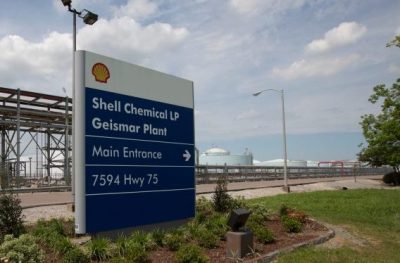
Pennsylvania Gov. Tom Wolf. Source: PAcast.
Pennsylvania MOU with Ohio, West Virgina re. petrochemical investment might be good idea for Alberta, British Columbia and West Coast LNG
How can Albertans tell that the Alberta Energy Diversification Committee was on the right track when it recommended last month that the provincial government aggressively pursue investments in petrochemical manufacturing? Well, Alberta’s competitors have identified similar opportunities, as a report released a year go in Pennsylvania demonstrates.
The study was conducted by IHS Markit for the Team Pennsylvania Foundation, a public-private partnership that supports economic development. It turns out the Keystone State’s competitive advantages – abundant supply of low-cost natural gas and natural gas liquids, existing plastics manufacturing base, robust transportation infrastructure – are pretty similar to Alberta’s.

Pennsylvania is closer to North American markets, but Alberta is close enough to West Coast deep water ports that it can access rapidly growing markets in Asia, particularly China and India.
The Americans understand the urgency of moving quickly to take advantage of growing demand for plastics.
“Pennsylvania has a once-in-a-generation opportunity to develop and implement a strategy that will cultivate a manufacturing renaissance and transform our economy across the Commonwealth,” said Gov. Tom Wolf, who co-chairs the foundation, in a press release.
He noted the importance of the $6 billion Shell Pennsylvania Chemicals project (ethane cracker with annual output of 3.3 billion pounds of ethylene, 3 polyethylene units with a combined annual output of 3.5 billion pounds) that would use feedstock from the nearby Marcellus and Utica shale gas basins, adding that “we must ensure that we make the most of this chance to create good paying jobs for Pennsylvanians.”
Pennsylvania isn’t fooling around, Alberta.
The Foundation has already set out a process to get the ball rolling that includes bringing the “right decision-makers and resources to the table, attracting additional infrastructure investments and petrochemical and plastics manufacturers, developing “pad-ready sites” to encourage investment, addressing potential critical infrastructure bottlenecks, and training a workforce with the right skill sets to fill future jobs.
Interestingly, Pennsylvania suffers from the same competitive disadvantage as Alberta: higher upfront capital and development costs relative to the US Gulf Coast petrochemical complexes.

But, just like Alberta, Pennsylvania believes that its petrochemical industry is “highly competitive on a cash cost basis relative to existing production centers.”
The EDAC report, drawing on a study by the Canadian Energy Research Institute in Calgary, estimated that Alberta’s capital costs were 10 to 15 per cent higher than American competitors, but once that hurdle was overcome, the province could compete globally.
To bridge the capital cost gap, last week Alberta introduced Phase II of the Petrochemicals Diversification Program.
Phase I provided $500 million in royalty credits to two projects.
Calgary-based Inter Pipeline received $200 million in credits and will build two new facilities worth $3.5 billion in the Industrial Heartland near Fort Saskatchewan, processing propane into value-added plastics products.
The Canada Kuwait Petrochemical Corporation’s will receive $300 million toward a $4 billion integrated PDH and polypropylene facility. The front-end engineering design work is underway and a final investment decision is expected in late 2018.
The government says the program attracted twice as much interest as expected and $20 billion of projects is potentially still on the table.
Unfortunately, Phase II doesn’t start until 2020-21.
While the second round includes ethane, the government is hoping for the construction of a single ethane cracker or the expansion of an existing unit.
By comparison, the Pennsylvania study is targeting four ethane crackers in addition to the one already included in the Shell project.
“The study is a roadmap that will help us jump start our strategy to attract that investment,” said Dennis Davin, secretary for the department of community and economic development.
The study also forecasts potential investment of $3.7 billion into natural gas liquids processing facilities, pipelines, and storage facilities.
Not to be outdone, Alberta introduced the Petrochemical Feedstock Infrastructure Program, which will be funded by $500 million in loan guarantees and grants spread over three years beginning in 2021-22.
As part of efforts to attract petrochemical investment, Pennsylvania entered into a tri-state agreement with Ohio and West Virginia – both states with significant shale natural gas industries – to co-operate on ways to “maximize opportunities for these resources to be used to support additional manufacturing opportunities within the region rather than to simply export the resources to other areas.”
“I’m proud to continue our successful collaboration with Ohio and West Virginia to ensure that we are doing everything we can to support additional development – and the jobs and economic growth that go with it – in a region with an unprecedented natural resource,” Wolf said in a press release Wednesday.
The memorandum of understanding might be an idea Alberta and British Columbia pursue for West Coast LNG. The global market is growing again thanks to China’s shift in emphasis from coal to natural gas for power generation and the two gas-producing provinces don’t want to miss the next window of opportunity.
This is especially true because, as the EDAC report points out, ethane and other feedstock components comprise only 8 to 15 per cent of natural gas and the remainder is methane that must find a home if petrochemical manufacturing is to be as competitive as possible.
In fact, the opportunity for Alberta petrochemical expansion is cut in half unless BC liquefied natural gas plants can take the methane.
EDAC recommended that Premier Rachel Notley co-operate with BC Premier John Horgan, with whom she is currently feuding with over the Trans Mountain Expansion pipeline project, to advance LNG projects.
An MOU between the two provinces might defuse some of that tension and send the right signals to LNG investors.
Full disclosure: I provided contract copy editing services on the final draft of the EDAC report.
Part 2 of this column will feature an interview with Pennsylvania senior energy advisor Denise Brinley about the progress that state is making with its petrochemical investment strategy.


Be the first to comment